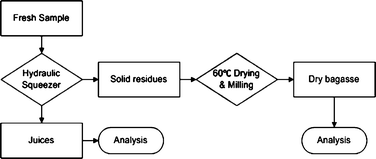Chemical composition and characterization of cellulose for Agave as a fast-growing, drought-tolerant biofuels feedstock
Abstract
A major issue raised about development of cellulosic biomass derived

* Corresponding authors
a
Department of Chemical and Environmental Engineering, Bourns College of Engineering, University of California, Riverside, 1084 Columbia Avenue, Riverside, CA 92507, USA
E-mail:
Charles.wyman@ucr.edu
Fax: +1 951-781-5790
Tel: +1 951-781-5703
b Center for Environmental Research and Technology, University of California, Riverside, 1084 Columbia Ave, Riverside, CA 92507, USA
c Institute of Paper Science and Technology, Georgia Institute of Technology, Atlanta, GA 30332, USA
d BioEnergy Science Center, Oak Ridge, TN 37831, USA
A major issue raised about development of cellulosic biomass derived

 Please wait while we load your content...
Something went wrong. Try again?
Please wait while we load your content...
Something went wrong. Try again?
H. Li, M. B. Foston, R. Kumar, R. Samuel, X. Gao, F. Hu, A. J. Ragauskas and C. E. Wyman, RSC Adv., 2012, 2, 4951 DOI: 10.1039/C2RA20557B
To request permission to reproduce material from this article, please go to the Copyright Clearance Center request page.
If you are an author contributing to an RSC publication, you do not need to request permission provided correct acknowledgement is given.
If you are the author of this article, you do not need to request permission to reproduce figures and diagrams provided correct acknowledgement is given. If you want to reproduce the whole article in a third-party publication (excluding your thesis/dissertation for which permission is not required) please go to the Copyright Clearance Center request page.
Read more about how to correctly acknowledge RSC content.
 Fetching data from CrossRef.
Fetching data from CrossRef.
This may take some time to load.
Loading related content
